
 |
The 1-Notrump Opening Bid |
This is my favorite system — partly because I get to revel in the opponents'
bewilderment when they learn that we do not play Stayman, and partly because of
the opening leader's frustration at having little clue as to declarer's distribution
even after a major-suit inquiry, but mostly because this simply is the most
powerful notrump setup in use today.
Although this system was conceived for a strong-notrump range (15+), we use
it with our weak notrump openings as well. In these cases, the meanings of
just two bids are swapped in the interests of right-siding the play.
The plethora of charts might be imposing, but some study will reveal a number of underlying patterns and parallel structures that facilitate assimilation of the methods. The Responder's Map has been created for that purpose. Admittedly, becoming comfortable with the structure will take some time; I kept my own notes handy for months!
Advantages:
- concealment of opener's distribution unless a fit is found.
- precise identification of responder's patterns.
- can play in two diamonds.
- avoid bad notrump games with weak major-suit combinations.
- find 4-3 major fits when appropriate.
- step responses accept or decline games or slams.
Disadvantages:
- potentially wrong-sides some 4-4 spade contracts when responder has both majors.
- game invitations cannot be played below 2NT. (Of course, most other modern systems cannot do that either, except with some
5-4in the majors.)Other:
- when responder is unbalanced, 5-2 major fits will be played in 3M rather than 2NT. (This is not a drawback.)
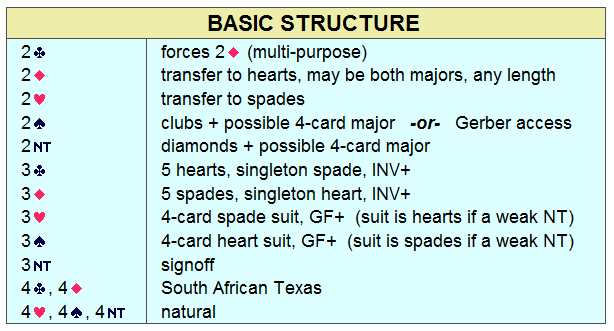
The 2♣ Response
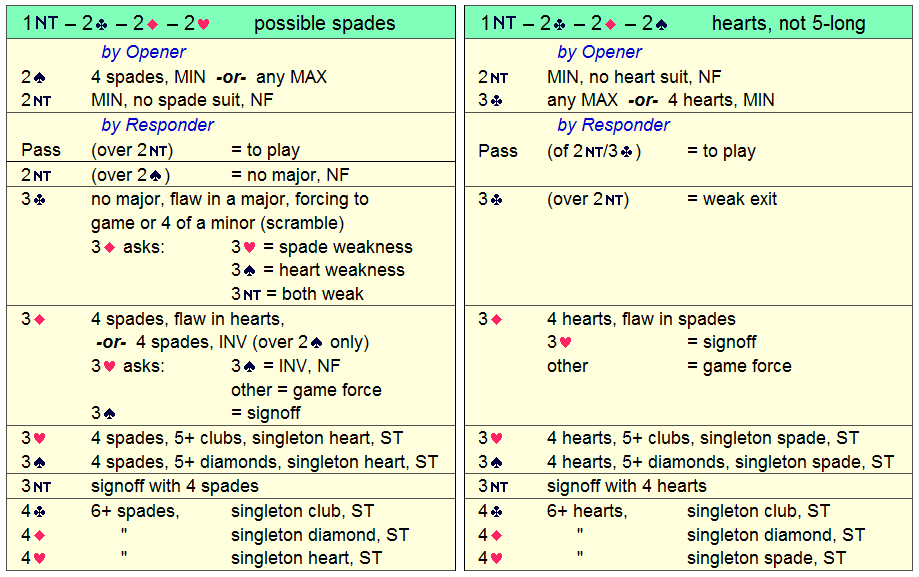
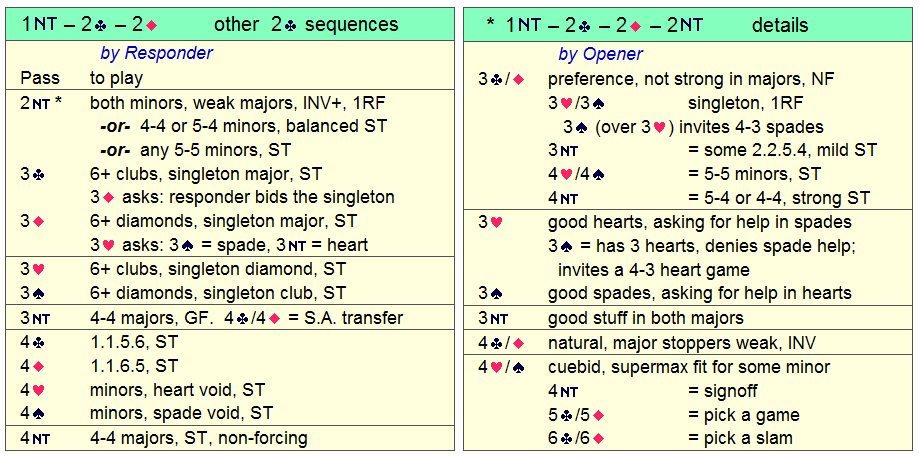
Transfers: 2♦ and 2♥
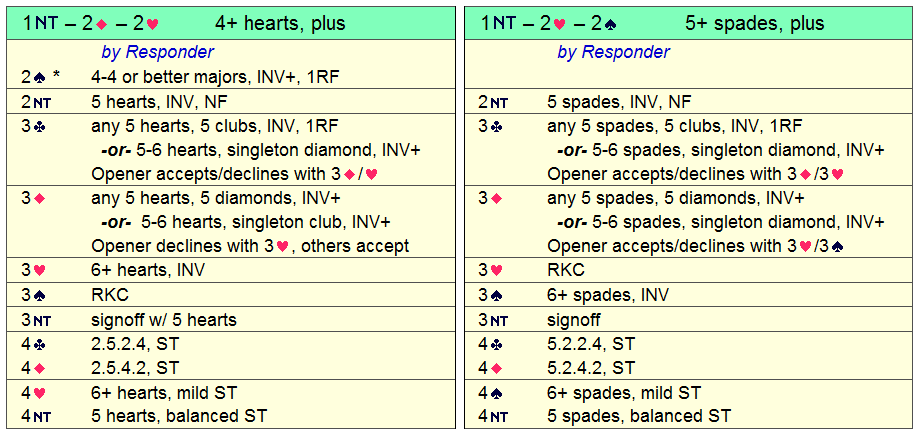
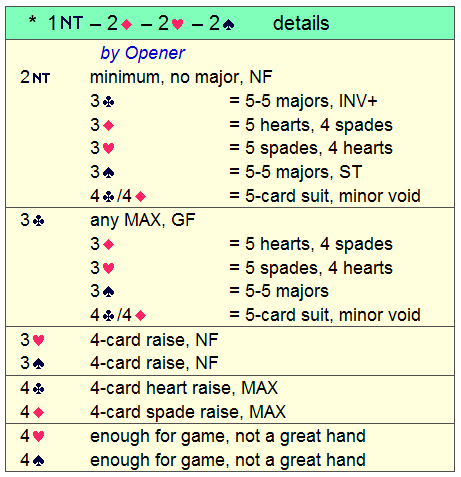
Other Responses: 2♠ and higher
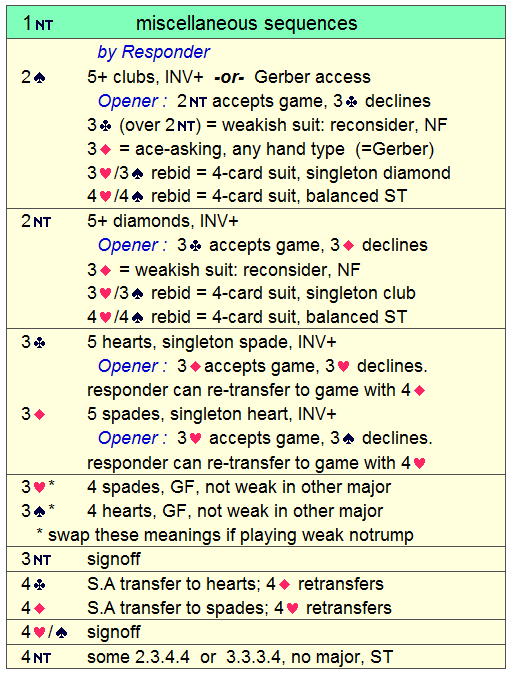
Map of Responder's Bids
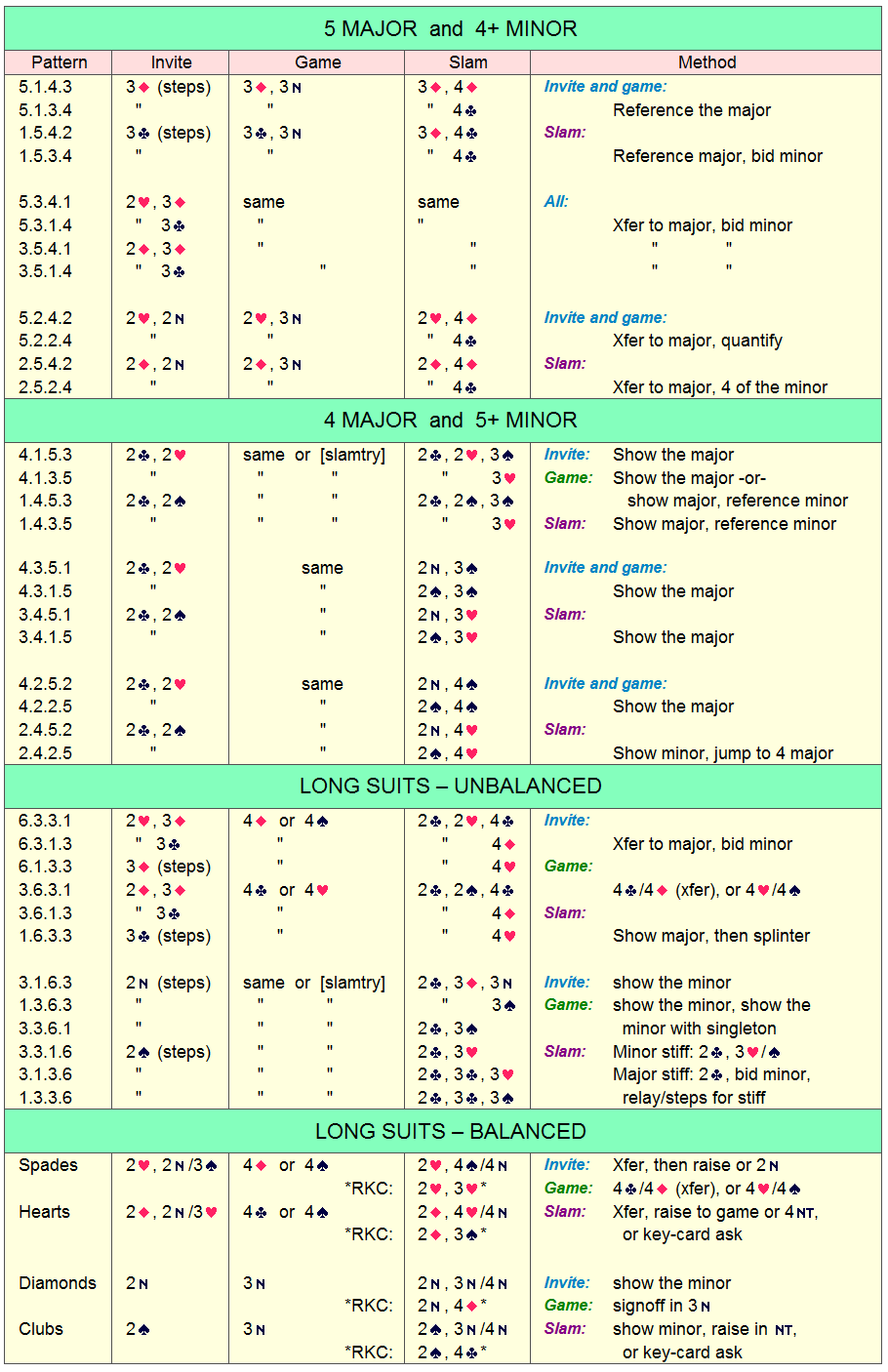
Discussion
The most complicated module is:
1NT-2♣-2♦-2♥.
The tools are there, however, to find 4-4 and 4-3 major fits,
determine whether to go to game, detect weak major holdings, invite notrump games,
or make slam tries with a major and a longer minor — all without opener
having to reveal to the defenders much, if anything, about his distribution, until a
fit is found. It is arguably tedious that three rounds of bidding are necessary
to make a simple notrump invitation, but the tradeoff is worth it.
Unbalanced hands with a 5-card major and invitational values will be played in three of the major rather than in 2NT. I never have incurred a poor result from this option.
There is no step-response available after:
1NT-2♦-2♥-3♦.
That could be accommodated by swapping the structures for 5-4 reds and
5-4 blacks (where there is extra space), but that would impose a
considerable memory strain, and we cannot justify it.
The system does not require the usage of South African Texas, but that
method clearly is more flexible than the standard convention, and many
4♣ and 4♦ bids aren't needed for
anything else. Sometimes responder has Kx or Kxx
of a suit, and it can be advantageous for that hand to declare.
In notrump auctions, 4NT is not Blackwood except under two conditions:
Reference to a 'weak' major means an unstopped doubleton.
Any three-card holding is not deemed a flaw, as the extra card reduces
defensive potential in that suit.
Notes / Memory Aids
After a 2♣ response, any 2NT by opener is
natural and non-forcing.
With 4-major and 5+ minor, good hands: holding a major singleton, show the major first; with minor singleton, show the minor first.
When a pair of bids is used to 'reference' other suits (not transfers), clubs and hearts always are linked, and diamonds and spades are linked.
When there is a choice of singleton-showing bids: The bid always is
natural when possible. Example: after
1NT-2♣-2♦: 3♣
and 3♦ include a major-suit singleton.
After 3♣-3♦, the singleton-showing calls
are obvious. But after 3♦-3♥, a linear
progression is eschewed in favor of keeping a call natural whenever possible:
3♠ = spade singleton, 3NT = heart
singleton. This structure is consistent throughout our system.